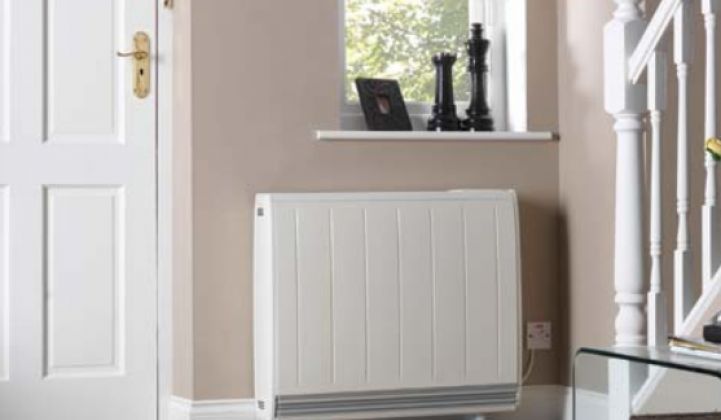Electric heaters could become a key tool for stabilizing Europe’s regional grids as they take on increasing amounts of intermittent renewable energy. That’s what a three-country trial involving up to 1,250 European households is setting out to prove.
The RealValue consortium, which is running the trials, comprises more than a dozen organizations. The consortium hopes to prove that advanced electric heaters can be aggregated into a huge energy-storage resource that offers the grid a range of services, while also benefiting household consumers.
Trial participants -- 800 in Ireland, 400 in Germany and 50 in Latvia -- have the opportunity to closely control their heating and utilize cheap electricity. They also receive a brand new Quantum Smart Electric Thermal Storage Systems (SETS), entirely free, and about $10 a month credit off their electricity bill.
Once the system is installed, price signals are received from the market operator, and this information is used to calculate the optimal operation mode of the SETS. Software developed by Intel will manage large groups of households that will provide services to the grid, while maximizing comfort and savings for the consumer. As the package evolves, it will take increasing amounts of information into account, such as meteorological data.
The Irish electric heating company Glen Dimplex and its partners hope to demonstrate around 26 percent to 27 percent in energy savings, said technical director Muiris Flynn. Of this, he suggests 20 percent could be passed on to the consumer, while the remainder would pay for the cost of managing the system. On an annual U.K. bill, that represents average savings of about $290 a year per household.
Household savings, achieved via energy arbitrage and trading, is the first of the project’s four value streams, said Flynn. The other three represent benefits for the grid: frequency regulation, reduced stress on transmission infrastructure, and savings in reducing the need for peak-time generation.
While Flynn conceded that the total value of these grid services is difficult to assess, he said even a small percentage of a country’s homes utilizing aggregated SETS could be a powerful resource for a grid operator. If 2 million homes are aggregated, the resulting controllable load could be 20 gigawatts. “It’s not a panacea for grid stability," said Flynn, “but it adds a great deal of flexibility to the system.”
Overall, the RealValue consortium claims that SETS could directly replace existing electric thermal storage heaters and water tanks with a combined load of 55 gigawatts across the European Union. And, they say, the technology could also replace direct electric resistance heaters with further connected load of 93 gigawatts.
But the market opportunities -- and demands -- vary dramatically from country to country. A chief factor is the penetration of electrical heating. Given the difficulty in persuading natural-gas users to convert to electricity, the consortium sees the focus as replacing the existing installed base of electric heaters. This ranges from just 5 percent of households in Spain up to 72 percent in nuclear-heavy France.
Germany -- one of the three countries participating in the trial -- is at the lower end of the scale, with just 8 percent of installed heating capacity being electric. Carsten Thomas, head of development for renewable systems at Glen Dimplex's German subsidiary, said that “storage heaters have an image problem” in the country.
Nevertheless, 8 percent still represents 4.8 million domestic storage heaters in Germany. And the country also has a high penetration of renewable energy, another factor which RealValue hopes will act in their favor. As the load of variable renewable energy builds, the market will increasingly be awash with peaks of cheap electricity -- something that a collection of aggregated domestic heaters can provide. “It might be a group of thousands or even tens of thousands of units,” said Flynn, “but to a utility, it will look like a single resource.”



